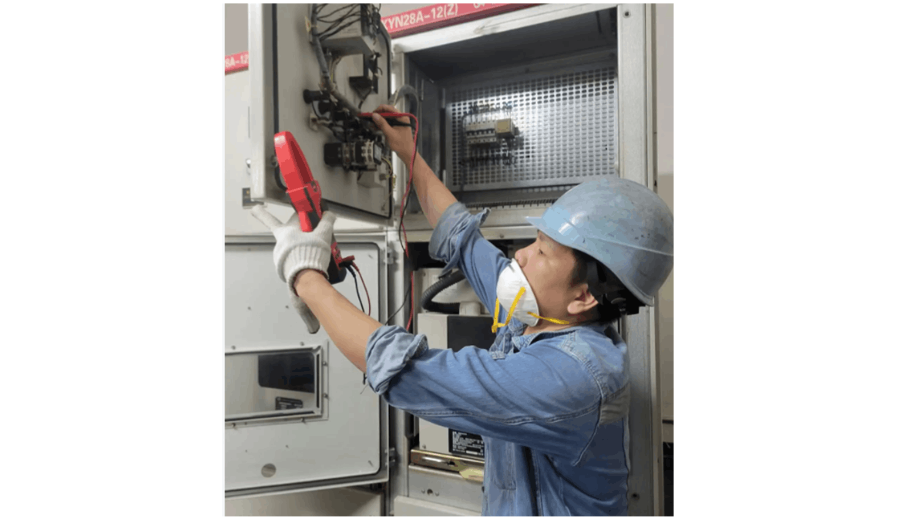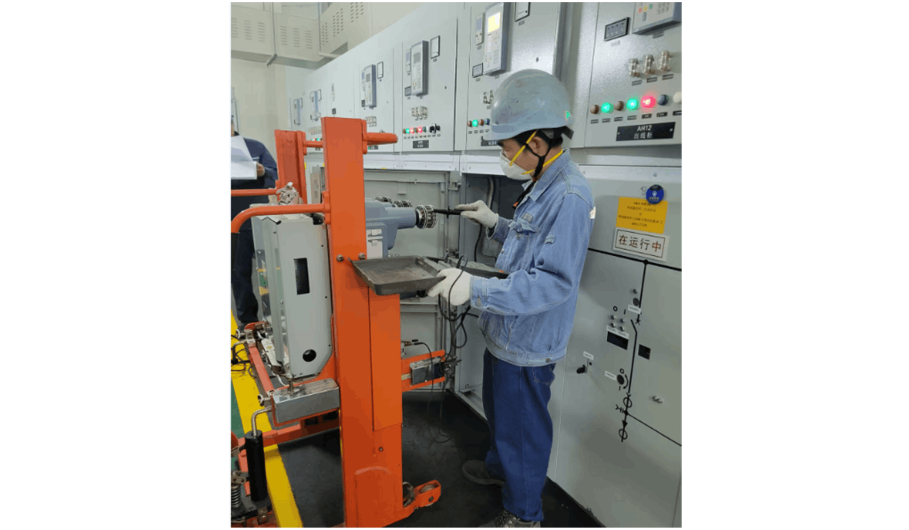Ang komprehensibong pagpapanumbalik mahimo nga importante aron masigurado ang ligtas ug stable nga operasyon sa mga sistema sa pagdistribute sa mataas nga kuryente. Ang mga pangunahon nga kinahanglan sa pagpapanumbalik mao kini: Unang, paggamit sa operational maintenance aron makamonitor ug makakuha og data gikan sa SCADA system, siguradohon nga ang mga parametro sa operasyon sa sistema nakaabot sa nahiuban nga constraints sa normal nga kondisyon. Pangaduha, pag-implementar sa pagpapanumbalik aron makapagpatuman sa Demand Side Management (DSM) ug Load Management (LM), pag-optimize sa load curve aron maprevent ang overloading ug violation sa inequality constraints sa panahon sa peak demand.
Pangatlo, pagsiguro sa voltage/reactive power optimization ug load balancing pinaagi sa pagpapanumbalik aron makareduce ang network losses ug ma-enhance ang operational efficiency sa distribution system. Sa dili pa, pag-implementar sa mechanical calculations sa iba't ibang stress conditions ug weather scenarios aron masigurado nga ang safety factors wala na sa gamay sa nahiuban nga values, maprevent ang safety incidents. Sa normal nga operasyon sa high-voltage distribution systems, ang pagpapanumbalik dapat siguradohon nga ang design ug implementasyon nagsuporta sa continuous, stable nga operasyon ug naghatag og reliable nga safety assurance. Sa praktikal nga pagpapanumbalik, dapat mag-develop og scientific ug comprehensive nga plan sa pagpapanumbalik batas sa aktwal nga kondisyon sa operasyon sa sistema.
Pagpapanumbalik ug Inspection sa Electrical Equipment
Ang normal nga operasyon sa electrical equipment estrechamente nakakonekta sa daily maintenance ug inspection. Ang pag-identify ug pag-resolve sa mga isyu sa unang yugto sa failure mahimo nga non lamang mapadako ang oras sa pag-repair ug mapaguba ang economic losses apan padayon makapromote sa enterprise efficiency ug sustainable development.
Routine Inspection sa Electrical Equipment
Ang regular nga maintenance, batas sa predefined cycles, usa ka fundamental nga sukol aron mapataas ang effectiveness sa pagpapanumbalik. Ang routine inspections dapat mahimong strict nga implementar sa daily operations aron maprevent ang safety failures.

Daily Patrol Inspection
Ang daily patrol inspection naglakip sa external observation sa high-voltage equipment aron ma-check kon normal ba ang iyang operasyon. Kini nga non-quantitative nga operational management method suitable para sa widely distributed high-voltage equipment. Ang patrol inspectors, ingon specialized technicians, responsable sa pag-inspect sa equipment sa specific process sections. Sila dapat ma-observe ang potential hazards ug anomalies batas sa standards sa equipment, accurately capture ang early fault information, ug provide clear inspection content, items, locations, ug positions para sa condition inspectors. Kini makapadako sa fault location efficiency, makapagreduce sa oras sa inspection, ug masiguro ang stable nga operasyon sa equipment.
Periodic Condition Inspection
Arin ang original nga performance sa production equipment, dapat ipatuman ang preventive ug thorough inspections sa key points ug specific locations batas sa predefined methods ug cycles. Kini makapadetect sa early defects ug hidden dangers, facilitating ang early prevention ug resolution, thereby improving inspection efficiency. Ang periodic condition inspection gi-implementar pinaagi sa maintenance personnel, batas sa information nga gihatag sa patrol inspectors, gi-implementar ang in-depth checks ug repairs sa abnormal equipment, ensuring ang high-voltage equipment operates without faults.
Equipment Parameter Monitoring
Ang system maintenance dili lang nag-inspect sa external faults apan usab nag-focus kung normal ba ang operating parameters sa equipment. Ang strict nga acceptance sa parameters essential aron masiguro ang normal nga operasyon sa equipment ug assess ang compliance sa system design. Ang key monitoring contents include: Normal parameters human sa equipment commissioning, sama sa automatic tripping protection sa high temperatures, timely activation sa cooling fans kon temperature rises, ug stable nga temperature sa transformer windings; normal function sa distribution switches; critical loads equipped sa dual power supply; regular maintenance sa critical loads; ug preventive testing sa transformers sa specified intervals.
Furthermore, sa panahon sa system optimization ug maintenance, ang tanang parameter anomalies dapat immediate report sa maintenance personnel aron maparesolba. Non lamang ang recording sa faults walay addressing mahimo nga madaghan ang issues. Ang maintenance personnel dapat recognize ang importansya sa daily parameter monitoring para sa overall system stability, enabling proactive supervision sa daily work aron maprevent ang safety incidents.
Precautions for High-Voltage Equipment Maintenance
Ang maintenance sa high-voltage equipment primary naglakip sa duha ka aspeto: (1) developing maintenance strategies batas sa operating conditions sa equipment, ug (2) real-time monitoring ug operation sa on-duty personnel. Only by coordinating these two aspects effectively mahimo ang safe operation sa high-voltage equipment masiguro.
Improving Electrical Equipment Maintenance Procedures
Para sa faulty equipment, iwasan ang disassembly without analysis. Unang, consult operators aron ma-identify ang cause ug specific phenomena sa fault. Para sa heavily contaminated equipment, clean contact points, terminals, ug buttons first, then check if external control keys are malfunctioning—many faults caused by conductive dust or dirt blockage, which can be resolved after cleaning. Second, before maintenance, inspect the equipment's exterior for damage or cracks. After understanding its service life and maintenance history, proceed with internal inspection. Disassembly should only occur after confirming an internal fault. Finally, power supply sections have a high failure rate; thus, inspect components such as fuses, thermal relays, contactors, and buttons in a de-energized state to assess the fault. Then, perform a powered test, using parameter measurements and auditory cues to locate the fault point and implement targeted repairs.

Determining Maintenance Focus and Strategy Based on Fault Consequences
Ang equipment mahimo nga mag-experience sa iba't ibang faults nga may different impacts: unsa may affect lang ang status indicators, others impact electrical/acoustic performance, modulation depth, o output power, while some can cause complete shutdown. Due to the significant differences in fault consequences, different repair strategies should be adopted. However, in practice, maintenance personnel often struggle to accurately assess fault severity, leading to blind repairs. Therefore, it is essential to remember that the goal of preventive maintenance is to eliminate, reduce, or prevent fault consequences, enabling scientific maintenance planning.
Condition-Based Approach for Component Repair or Replacement
Para sa certain components, reliability correlated sa service time; replacing o repairing them before potential failures occur can prevent breakdowns. However, for components where reliability is not significantly related to service time, scheduled replacement o maintenance does not improve equipment performance. In practice, some personnel replace components prematurely to avoid failures, but this can inadvertently introduce new problems. Therefore, component replacement and disassembly repairs should be approached cautiously to avoid secondary faults.
Component Maintenance, Cleaning, and Inspection as the Core of Preventive Maintenance
As high-voltage equipment automation systems continuously upgrade, operations become increasingly simplified, and equipment monitoring relies more on automated control systems, reducing the number of components directly observable by operators. Anomalies previously detectable through listening, meter reading, and patrols now require maintenance inspections. Therefore, during inspections, close attention should be paid to component conditions, such as oil or water leakage, pin detachment, sparking marks, or overheating discoloration at circuit joints, fuse clips, and high-current connection points. These anomalies are often visible through surface observation. However, some staff frequently overlook subtle changes, delaying timely fault resolution. Thus, meticulousness in work must be enhanced to ensure faults are detected at the earliest possible moment.
























